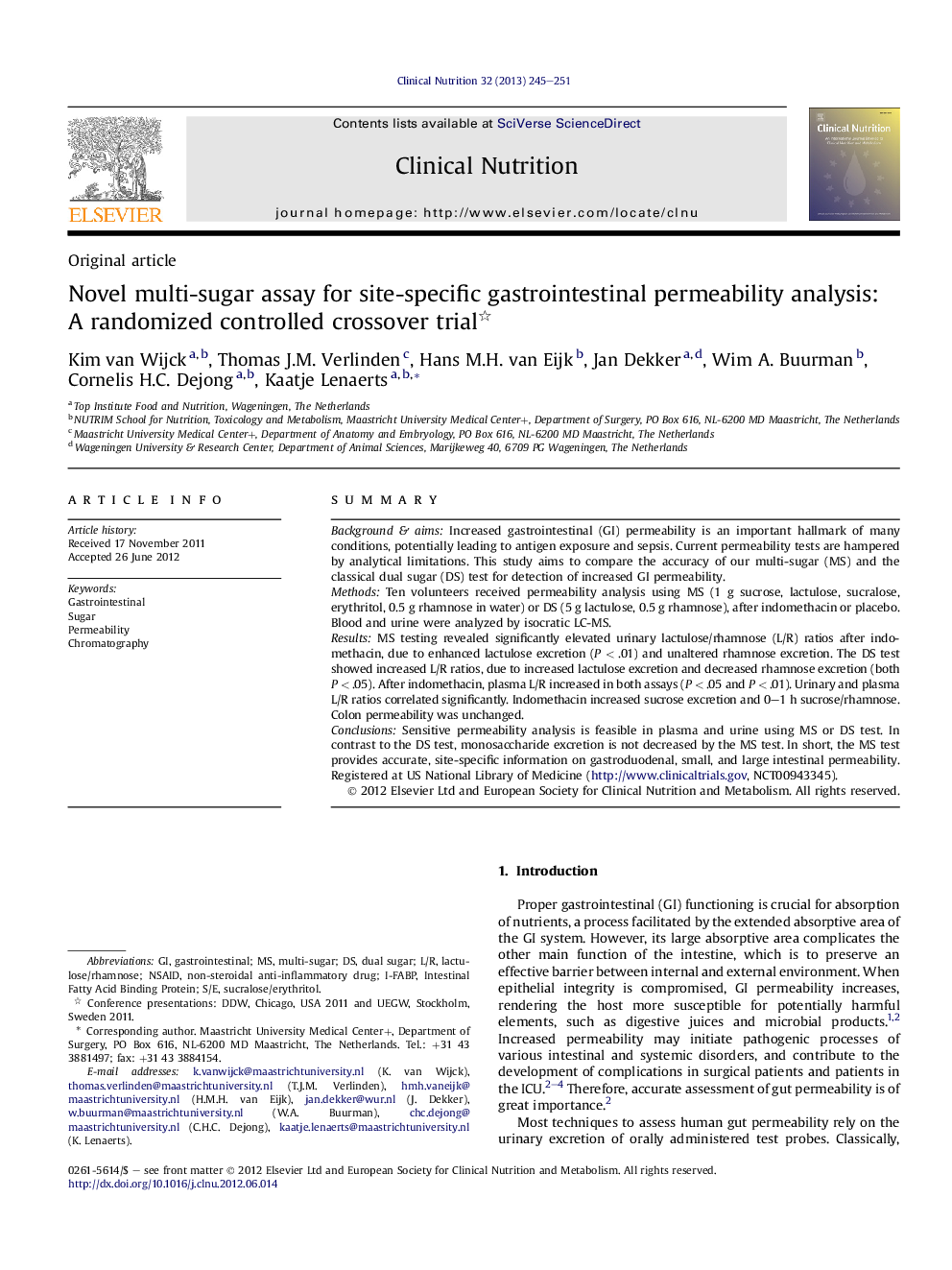| Article ID | Journal | Published Year | Pages | File Type |
|---|---|---|---|---|
| 2689747 | Clinical Nutrition | 2013 | 7 Pages |
SummaryBackground & aimsIncreased gastrointestinal (GI) permeability is an important hallmark of many conditions, potentially leading to antigen exposure and sepsis. Current permeability tests are hampered by analytical limitations. This study aims to compare the accuracy of our multi-sugar (MS) and the classical dual sugar (DS) test for detection of increased GI permeability.MethodsTen volunteers received permeability analysis using MS (1 g sucrose, lactulose, sucralose, erythritol, 0.5 g rhamnose in water) or DS (5 g lactulose, 0.5 g rhamnose), after indomethacin or placebo. Blood and urine were analyzed by isocratic LC-MS.ResultsMS testing revealed significantly elevated urinary lactulose/rhamnose (L/R) ratios after indomethacin, due to enhanced lactulose excretion (P < .01) and unaltered rhamnose excretion. The DS test showed increased L/R ratios, due to increased lactulose excretion and decreased rhamnose excretion (both P < .05). After indomethacin, plasma L/R increased in both assays (P < .05 and P < .01). Urinary and plasma L/R ratios correlated significantly. Indomethacin increased sucrose excretion and 0–1 h sucrose/rhamnose. Colon permeability was unchanged.ConclusionsSensitive permeability analysis is feasible in plasma and urine using MS or DS test. In contrast to the DS test, monosaccharide excretion is not decreased by the MS test. In short, the MS test provides accurate, site-specific information on gastroduodenal, small, and large intestinal permeability.Registered at US National Library of Medicine (http://www.clinicaltrials.gov, NCT00943345).
